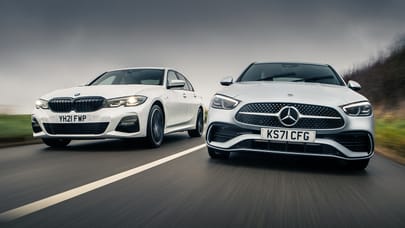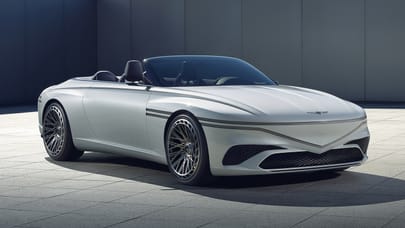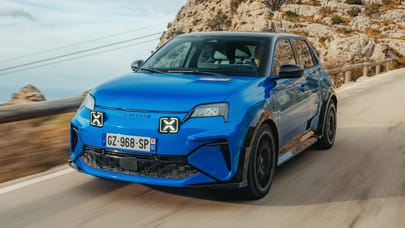
Thinking of buying an electric car? Here's a ten-step guide
Confused about this whole EV thing? Allow TG to simplificate it

Do the maths

Even the cheapest electric cars are still quite expensive. Of course, there are deals to be had, but usually EVs are a few grand dearer to buy outright, or about £100 per month more on PCP than a comparable internal combustion-powered car. However, your EV will cost nothing whatsoever in VED, it shouldn’t cost as much to maintain and filling up with electricity is far cheaper than filling up with petrol or diesel. For example the Mini Electric uses 15.5kWh/100km, which costs around £2.20 if you charge at home. Meanwhile, a normal Cooper S auto uses, at best, 5.6 litres of fuel to cover the same 62 miles. That’s £7 in unleaded. But all those savings pale into insignificance if you have a company car – running an EV could save you business-types thousands per year.
Advertisement - Page continues belowDo the research

Nowadays EVs come in all shapes and sizes - from tiny city cars like the Volkswagen e-Up to massive seven-seat SUVs like the Tesla Model X. Besides the normal stuff (practicality, handling, comfort etc), remember to think about what brand you’re buying into, what they offer. Whether it’s a free wallbox (more on that later), special access to charging networks or something else. As for range - do you drive 300 miles every single day? No, you do not. On average Brits only drive 20 miles a day and lots of range typically costs lots of money, so before you spend big on that Model S, I-Pace or Kona, it’s worth thinking about how much of it you strictly need. You can always rent another car for longer journeys.
Do a dry run

Driving an EV takes some getting used to. First thing you’ll notice is the total and complete lack of noise, and how even the slowest EVs catapult away from a standstill as though they’ve been dropped from a great height. Then you’ll try to stop. Pretty much all EVs are equipped with regenerative braking systems, which harvest energy normally lost as you slow down. So when you lift off the accelerator, EVs lose speed more quickly than normal cars. Many let you adjust the amount of regeneration, and some let you turn it off altogether. Don’t do that, though. Inefficient innit. Talking of efficiency - pay attention to the range computer. ‘Enthusiastic’ driving, cold weather and liberal use of the air-con all hobble range.
Advertisement - Page continues belowSort home charging

You can use a three-pin plug, but you shouldn’t because it’ll take days (and, if you have to use an extension cable to reach it, probably set your house on fire). Seriously – Renault says fully charging a Zoe from 0 per cent using a normal socket takes 37 hours. So if you can, have a 7kW wallbox installed on your drive. Your dealer should at the very least help you get set up, if not throw one in when you buy your car. We promise it’ll change your life – plug-in when you get home in the evening, as you might your iPhone, and whatever your EV, it’ll be full (or very close to it) when you leave for work in the morning. If you live in a flat, talk to your landlord or the building’s owner, and if you street-park... oh dear.
Try public charging

It’s not as simple as just rocking up and plugging in. Some chargers let you pay as you go with a contactless credit or debit card, but others need you to have an account set up and a specific app on your phone. And there’s no guarantee the charger will even be working when you arrive. It might not talk to your car properly and deliver only a slow trickle of electricity, there may be a queue or a normal car could be blocking the way. The unpredictability of the whole thing is just infuriating. The best thing you can do is download ZapMap, which shows all 30,000-odd chargers in the UK along with payment and access info. Or just buy a Tesla, and thus get access to its enviable network of fast, reliable chargers.
Embrace the tech

It’s not unusual for a car to come with a dedicated smartphone app nowadays. Especially if it’s an EV. The best of these apps let you schedule charging to take advantage of low energy prices, help with journey planning (should it be a long one and you need to charge halfway) and give you complete control over the air conditioning. Tell your car what time you want to leave in the morning, and it’ll have all the windows defrosted and the interior stable at 21 degrees by the time you open the door.
Sell the old car

Why not? You don’t need it anymore. By all means keep something amusing tucked away for sunny weekends, but for the day-to-day there’s really no point. EVs are quieter, smoother and just generally better at the daily grind. The one thing you might want to do, on selling your ICE-car, is look at car rental companies and, if you live in a big city, car sharing services. Should you need a normal car for a family holiday or weekend away just rent one. You can afford it, with all the money you’ve saved in fuel.
Advertisement - Page continues belowSpread the word

By all means tell your mates about this new-fangled electric car you’ve just bought. Take them for a spin. But please don’t evangelise, and turn into one of those awful cultists on the Internet who’d buy a G-Whiz if Elon Musk bought the rights, stuck a Tesla badge on the front and ironically called it ‘the next big thing’ in a tweet he hasn’t properly thought through. EVs are great, but they aren’t the second coming. Or maybe they are. But still, calm down.
Maximise greeness

The UK is getting better at generating green energy, but if you’re really committed, it’s time to start thinking about generating your own. Get some solar panels and a Tesla PowerWall to manage them, and keep you online even if there’s a power cut. Hell, stick a 50ft wind turbine on your roof, dig deep and go all geothermal, erect a dam to harness the untold energy-generating potential of your garden pond. It’ll cost a bit to set up, but it’ll slash your energy bills. And any energy you don’t use you can sell back to the grid. Before long, EVs will be able to do much the same.
Advertisement - Page continues belowBuy yourself something nice

Now get the calculator out and work out how much money you’ve saved. Not bad, is it? You could save that money, but we think you’ve earned a treat - a nice watch, perhaps, maybe some home improvements. Put it towards the mortgage, or treat your spouse to a weekend away to apologise for that one time you got your maths a bit wrong and ran out of juice on the M4.









